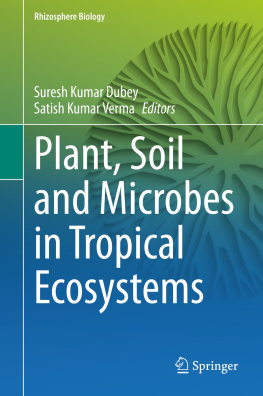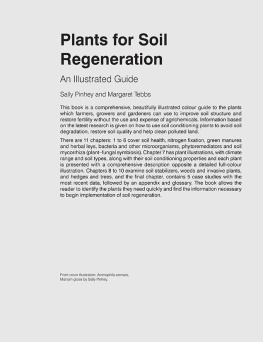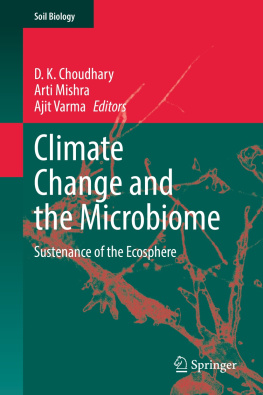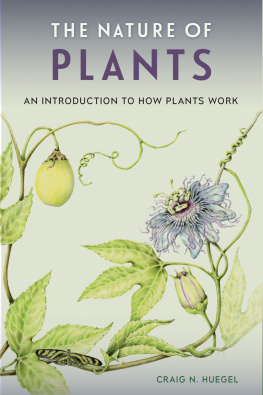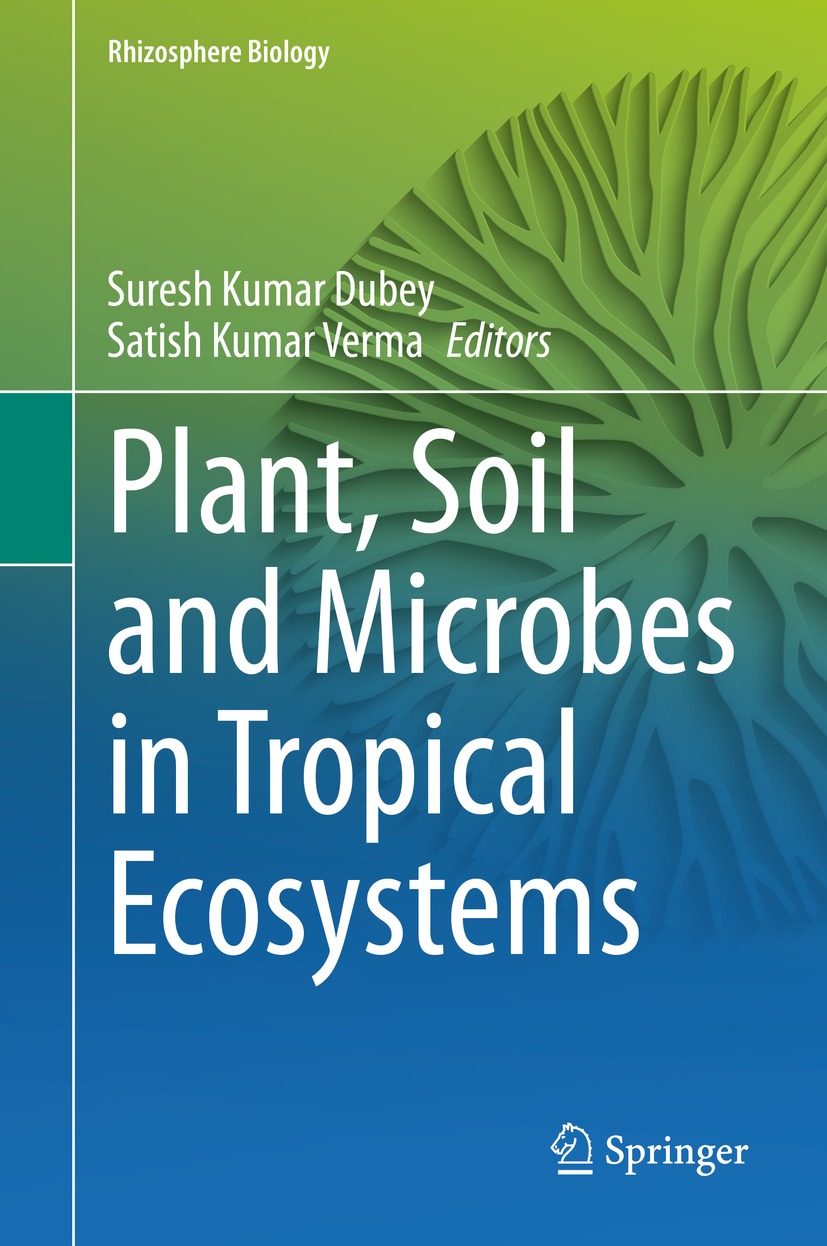Rhizosphere Biology
Series Editor
Anil Kumar Sharma
Biological Sciences, CBSH, G.B. Pant University of Agriculture & Technology, Pantnagar, Uttarakhand, India
The Series Rhizosphere Biology, emphasizes on the different aspects of Rhizosphere. Major increase in agricultural productivity, to meet growing food demands of human population is imperative, to survive in the future. Along with methods of crop improvement, an understanding of the rhizosphere biology, and the ways to manipulate it, could be an innovative strategy to deal with this demand of increasing productivity. This Series would provide comprehensive information for researchers, and encompass all aspects in field of rhizosphere biology. It would comprise of topics ranging from the classical studies to the most advanced application being done in the field. Rhizoshpere is a dynamic environment, and a series of processes take place to create a congenial environment for plant to grow and survive. There are factors which might hamper the growth of plants, resulting in productivity loss, but, the mechanisms are not very clear. Understanding the rhizosphere is needed, in order to create opportunities for researchers to come up with robust strategies to exploit the rhizosphere for sustainable agriculture.
There are titles already available in the market in the broad area of rhizosphere biology, but there is a major lack of information as to the functions and future applications of this field. These titles have not given all the up-to-date information required by the todays researchers and therefore, this Series aims to fill out those gaps.
More information about this series at http://www.springer.com/series/15861
Editors
Suresh Kumar Dubey and Satish Kumar Verma
Plant, Soil and Microbes in Tropical Ecosystems
1st ed. 2021

Logo of the publisher
Editors
Suresh Kumar Dubey
Department of Botany, Banaras Hindu University, Varanasi, Uttar Pradesh, India
Satish Kumar Verma
Department of Botany, Banaras Hindu University, Varanasi, Uttar Pradesh, India
ISSN 2523-8442 e-ISSN 2523-8450
Rhizosphere Biology
ISBN 978-981-16-3363-8 e-ISBN 978-981-16-3364-5
https://doi.org/10.1007/978-981-16-3364-5
Springer Nature Singapore Pte Ltd. 2021
This work is subject to copyright. All rights are reserved by the Publisher, whether the whole or part of the material is concerned, specifically the rights of translation, reprinting, reuse of illustrations, recitation, broadcasting, reproduction on microfilms or in any other physical way, and transmission or information storage and retrieval, electronic adaptation, computer software, or by similar or dissimilar methodology now known or hereafter developed.
The use of general descriptive names, registered names, trademarks, service marks, etc. in this publication does not imply, even in the absence of a specific statement, that such names are exempt from the relevant protective laws and regulations and therefore free for general use.
The publisher, the authors and the editors are safe to assume that the advice and information in this book are believed to be true and accurate at the date of publication. Neither the publisher nor the authors or the editors give a warranty, expressed or implied, with respect to the material contained herein or for any errors or omissions that may have been made. The publisher remains neutral with regard to jurisdictional claims in published maps and institutional affiliations.
This Springer imprint is published by the registered company Springer Nature Singapore Pte Ltd.
The registered company address is: 152 Beach Road, #21-01/04 Gateway East, Singapore 189721, Singapore
Foreword
The concept of rhizosphere was enunciated by Hiltner in 1904. Rhizosphere biology per se takes into its ambit organisms that belong to large groups of bacteria, fungi, Protozoa, nematodes, and insects. Thus it is interactions in this complex milieu that are to be considered critically in order to arrive at any meaningful conclusions. This inter alia requires that rhizosphere is analysed not only at a single plant level but also at field scale. Available information derived from laboratory and field investigations suggests complexity not only at species level but also at population and community scale. Until recently this information was derived for especially bacteria and fungi through phenotypic studies based on artificial media and the data so generated was therefore difficult to duplicate for a single soil site. This situation has now completely changed with the availability of tools of metagenomics and gene sequencing, which permit exploration of microbes that were prone to artificial cultivation. As a result it is possible now to investigate rhizosphere into its variable components not only into species spectrum but also at temporal and spatial scales. In addition, the availability of other advanced analytical tools including microscopes allows deeper investigations into the realm of in situ localization of microbial communities and diffusivity of nutrients from nutrients that play an important role in interactions that are pivotal to appreciate the close linkages between below ground and above ground components of the plant ecosystem. It is the music generated in the rhizosphere that culminates in improved shoot growth with the resultant better plant productivity. Notwithstanding these attributes, rhizospheric microbial populations are an admixture of neutral, antagonistic, mutualistic, and pathogenic components. Any disturbance by way of use of herbicides and pesticides can disturb the delicate equilibrium that may take long to come back to normalcy. Among these inhabitants, mutualises belonging to the group mycorrhizae extend their hyphae as additional root hairs and thus exert a mycorrhizospheric effect. On the other hand nodules in case of leguminous crops are a harbinger of non-nitrogen fixing yet growth promoting bacteria with further influence of the rhizosphere of plants. The inter-linkages of phosphorous and nitrogen economy come to play a decisive influence through these two groups of mutualists with resultant beneficial influence on crop productivity. In tropical ecosystems the role of nutrient turnover can make or mar the survival and fitness of a plant community under such circumstances. Considering limitations and desirability of sustained production systems to meet the food demands of tomorrow, bringing together published information on the subject is always a welcome step. In the present volume, the editors, Prof. S.K. Dubey and Dr. S. K. Verma, have done a useful exercise to fill this gap. I hope it will further the cause of rhizosphere biological assessment with tomorrows needs and aspirations.
B. N. Johri
Preface
Microbial communities have a profound effect on the performance of plants by influencing their growth and development. Plant-associated microbes including mainly archaea, bacteria, and fungi are beneficial as well as harmful to them. Large proportions of these microbes live in the close vicinity of the roots (rhizosphere) and are called rhizospheric microorganism. Actually, plants selectively recruit soil microbes towards the rhizospheric region to get benefits in terms of nutrient acquisition, growth stimulation, and protection from biotic and abiotic stresses. The composition of these rhizospheric microbial communities and the level of interactions with plants largely depend on the type of soils, plant genotype, and abiotic factors. Some of the microbes including endophytes, rhizobia, and mycorhizae enter into the root tissues and develop permanent internal mutualistic association. Rhizospheric microorganisms and mycorhizae have been well studied for their beneficial role in plant development and protection. They improve host plant fitness by mobilising inorganic nutrients such as nitrogen, phosphorus, potassium, and iron, fixing atmospheric nitrogen, producing growth hormones, and suppressing plant pathogens. Also they induce host plant gene expression for better adaptation. Excessive and injudicious use of chemical fertilisers and pesticides already has impacted our ecosystems, posing a great threat to human and animal health. Also these chemicals disturb the composition and interactions of natural microbiota. Research and knowledge of rhizospheric biology would be very critical in manipulating rhizospheric microbes for making strategy for sustainable cultivation of crops and medicinal plants. Nevertheless, a majority of the microbes is non-cultivable and hence new technological approaches such as functional metagenomics and high-throughput sequencing need to be designed to understand better the functional role of non-cultivable microbes. Most of the studies related to plantmicrobe interactions pertain to temperate regions despite the fact that tropical ecosystems are richer in diversity and are complex in terms of plantmicrobe interactions. It is very crucial to develop a better understanding of how the soil types and abiotic factors influence the plantsoilmicrobe interactions in tropics. In view of the aforementioned issues, this volume in the Rhizosphere Biology series is titled

